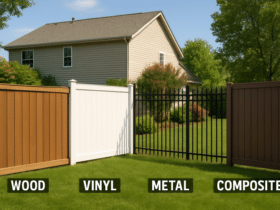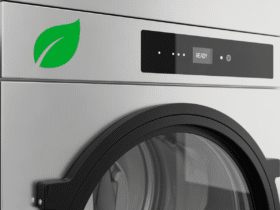Key Takeaways
- Understanding the common causes of minor epoxy floor damage helps prevent future issues.
- Simple DIY techniques can effectively address superficial floor problems.
- Proper maintenance extends the longevity and appearance of epoxy floors.
- Using appropriate tools and materials ensures successful repairs.
- The significance of regular assessments in maintaining floor health.
Common Causes of Epoxy Floor Damage
Epoxy floors stand out for their durability and aesthetic charm, making them a preferred choice for residential and commercial spaces. However, like any other material, they aren’t immune to damage, which can manifest over time despite the floor’s initial resilience. Understanding the root causes of these issues allows homeowners and facility managers to put effective preventive measures in place, thus safeguarding their investment. Common culprits include heavy foot traffic, which can wear down the surface over time and lead to unsightly scratches. Environmental fluctuations, such as temperature changes, can cause the epoxy to expand or contract, leading to potential cracks or warping. Moreover, accidental impacts from dropped objects add to the risk, often creating chips or dents that detract from the floor’s glossy finish. These factors can create superficial issues like scratches, chips, or discoloration on the floor’s surface, and without intervention, minor damage can easily escalate. By recognizing and addressing these causes early on, it is possible to maintain a pristine floor appearance and avoid more costly repairs. Additionally, being aware of potential risk factors allows for implementing protective strategies, such as rugs or mats in high-traffic areas, to further mitigate damage, maintaining the epoxy’s appealing aesthetic.
DIY Repair Techniques
Pursuing professional expert epoxy floor repair solutions is not always necessary for minor damage. In many cases, homeowners can take advantage of cost-effective do-it-yourself solutions. Simple do-it-yourself methods can effectively address minor imperfections, which can accumulate and alter the floor’s appearance if not dealt with promptly. Start by thoroughly cleaning the area with a gentle cleanser, which is crucial for ensuring that no residual dirt or debris interferes with the repair. Preparation is key to a successful repair; dirt and debris can prevent adhesives from sticking, resulting in a subpar finish. Next, use fine sandpaper to smooth out any jagged edges around the scuffed or chipped area, allowing the repair materials to adhere smoothly. This preparation step is critical, as Popular Mechanics highlighted, as it emphasizes the importance of surface preparation in achieving a successful outcome. Once the area is prepped, apply an epoxy patch kit—readily available at most hardware stores—allowing you to fill in the defect and restore the floor’s smooth, glossy appearance. The application of the epoxy should be done carefully to avoid air bubbles, which can weaken the repair. This improves the visual appeal and strengthens the floor’s surface, preventing further deterioration. With a bit of patience and care, homeowners can extend the lifespan of their epoxy flooring with minimal cost and effort, preserving its function and allure.
Maintaining Your Epoxy Floor
Ensuring the longevity and aesthetic of an epoxy floor requires regular and proper maintenance, which goes beyond mere cleaning to include preventative care. Incorporating a consistent cleaning regimen, including sweeping to eliminate dirt and debris and mopping with a pH-neutral cleaner, prevents the accumulation of substances that could degrade the epoxy’s sheen. Harsh chemicals can dull or even strip the epoxy surface without the correct cleaning products. Periodic cleaning deters grit from scratching the surface and maintains the floor’s vibrant look, creating a welcoming environment in homes and businesses. Moreover, implementing protective measures such as placing felt pads under heavy furniture is a buffer to avoid unnecessary scratches or dents that could lead to costly repairs. These small yet significant preventive strategies can significantly extend the lifespan of your epoxy floor, preserving its integrity and prolonging its lifespan. In addition, avoiding harsh chemicals and abrasive cleaning tools can prevent the erosion of the epoxy finish, keeping it looking new for years to come. Regular attention and mindful prevention ensure the floor remains a lasting part of your decor, enhancing the overall ambiance.
Tools and Materials for Effective Epoxy Repairs
The success of any repair partly hinges on the tools and materials employed, highlighting the necessity of investing in quality from the outset. Essential items for an effective epoxy repair include sandpaper (for smoothing surfaces), a sturdy plastic whisk broom (for cleaning debris), and a high-quality epoxy repair kit. Selecting top-notch materials ensures that repairs look seamless and last longer, blending in indistinguishably with the existing flooring. Quality tools provide better results and longevity, saving time and expenses in the future. This consideration is emphasized by experts at This Old House, who advocate for precision and quality in materials used for home repairs. By investing in the right tools, you can achieve results that maintain the floor’s durability and visual appeal.
Furthermore, using the correct techniques when applying these tools can distinguish between a temporary fix and a lasting solution, highlighting the importance of proper repair education. Adequate training in epoxy repair methods ensures that even novice DIY enthusiasts can attain professional-level results. Devoting the necessary attention to these details can mean the difference between a floor that lasts for years and requires frequent upkeep.
Steps to Address Minor Floor Issues
- Identify Damage: Thoroughly inspect the entire floor to locate any damaged areas. Pay close attention to high-traffic zones, as these are more prone to wear. Identifying all areas of concern before starting can streamline the repair process and ensure no damage is overlooked. Carefully spot even the most minor imperfections to address them before they become significant issues.
- Surface Cleaning: Before repairs, clean the affected area with a mild detergent to remove any debris, ensuring the surface is pristine for the repair material. A clean surface is crucial for the adhesion of the epoxy, so don’t skip this step. Even minor contaminants can affect the bonding process, leading to ineffective repairs.
- Sand the Surface: Use sandpaper to gently smooth any sharp edges around the damage. This prepares the surface for better adhesion of the repair material and ensures that the repair integrates seamlessly with the surrounding floor. Proper sanding helps blend the new with the old, maintaining the floor’s uniform look.
- Apply Epoxy Mixture: Evenly distribute the epoxy mixture from the patch kit over the affected sections, using a putty knife or similar tool for precision. Ensure no air bubbles are trapped under the epoxy, as these can weaken the repair. Careful handling results in a stronger bond, protecting the floor’s surface long-term.
- Allow Drying Time: Ensure the floor remains undisturbed until the epoxy has fully cured, ensuring a seamless and durable finish. Once cured, the repair should be as durable as the original surface and ready to handle daily use. Patience in this final step ensures a visually pleasing and reliable finish.
Regular Inspections: A Proactive Approach
Routine inspections are a proactive measure that can save time and money in the long run, especially when addressing potential issues before they worsen. By routinely scanning the epoxy floor, especially in areas prone to damage, potential problems can be identified and resolved before they worsen. High-traffic areas, such as entrances or corridors, often show signs of wear sooner than less frequented spaces. Engaging in regular assessments not only preserves your floor’s appearance but also supports its structural integrity, staving off the necessity for extensive repairs. These inspections allow for the early detection of wear and tear, enabling timely interventions to prevent more substantial issues. By taking a preventative approach, homeowners and facility managers can ensure that their epoxy floors remain attractive and functional long-term. Moreover, maintaining detailed records of inspections and repairs can assist in tracking the floor’s condition and planning any required maintenance.
The Value of Professional Advice
Despite the effectiveness of DIY solutions for minor mishaps, there are situations where professional intervention becomes invaluable—those with specialized skills and knowledge best address complex repairs or widespread damage. Experts can provide targeted solutions with precision that DIY methods may not achieve, especially for extensive or deeply ingrained damage. Combining regular maintenance routines with occasional professional evaluations ensures that your epoxy flooring sustains its robustness and aesthetic charm over the years. The tailored advice and service from experienced professionals enhance the quality and longevity of your flooring, proving to be a wise investment for any property owner. Professional services also offer peace of mind, knowing that complex issues are handled by those who understand the nuances of epoxy materials and repair techniques. This combination of personal care and expert involvement can create a balanced maintenance strategy that maximizes the lifespan and performance of epoxy floors. Choosing expert advice can offer clarity and solutions that maintain the beauty and longevity of your floors, making sure they continue to be an asset instead of a liability.











